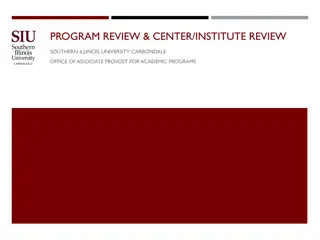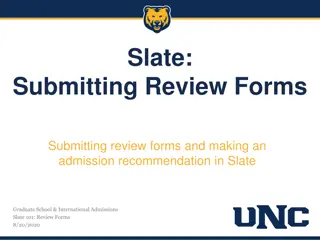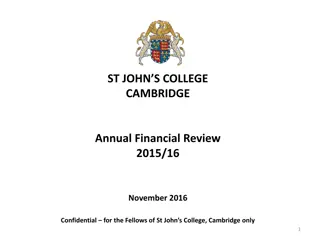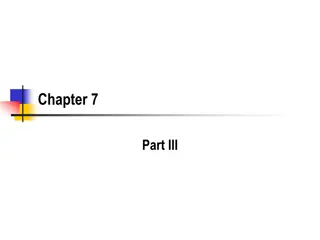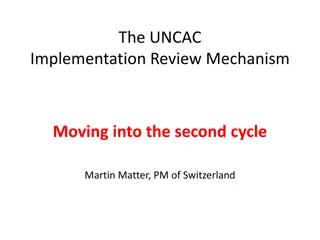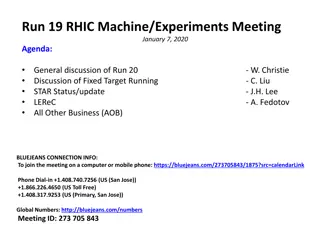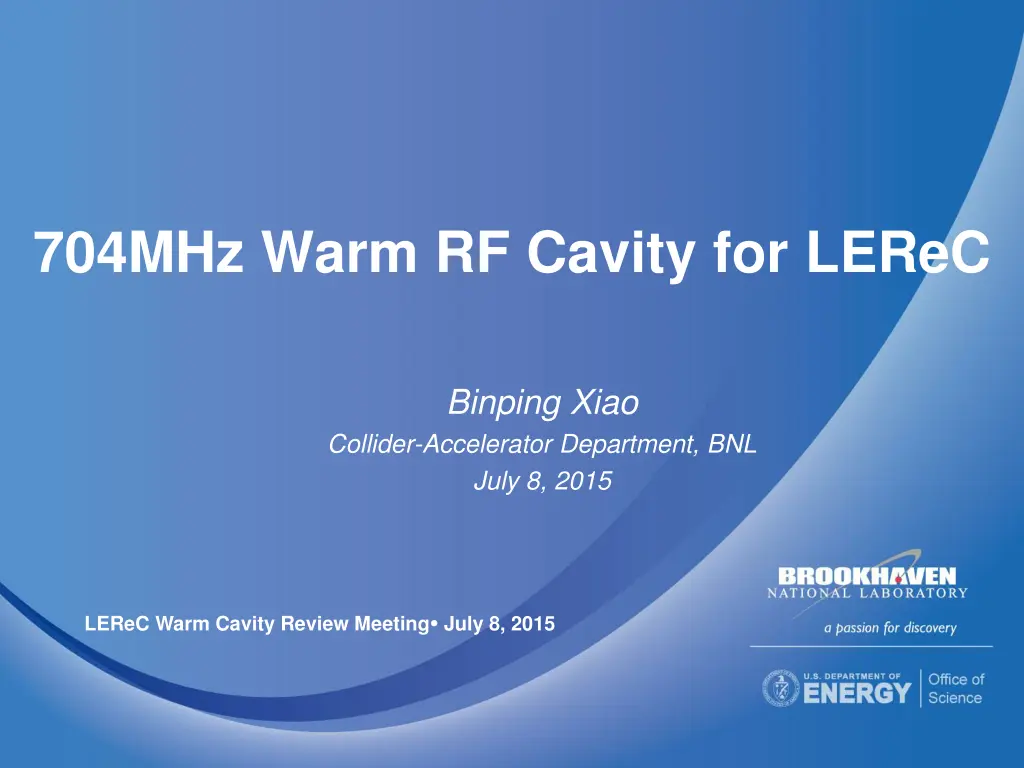
Optimizing RF Cavity Design at LEReC
Explore the optimization of RF cavity design at LEReC to enhance performance. Includes details on warm RF systems, cavity parameters, nose cone depth adjustments, and elliptical blending for improved results.
Download Presentation

Please find below an Image/Link to download the presentation.
The content on the website is provided AS IS for your information and personal use only. It may not be sold, licensed, or shared on other websites without obtaining consent from the author. If you encounter any issues during the download, it is possible that the publisher has removed the file from their server.
You are allowed to download the files provided on this website for personal or commercial use, subject to the condition that they are used lawfully. All files are the property of their respective owners.
The content on the website is provided AS IS for your information and personal use only. It may not be sold, licensed, or shared on other websites without obtaining consent from the author.
E N D
Presentation Transcript
704MHz Warm RF Cavity for LEReC Binping Xiao Collider-Accelerator Department, BNL July 8, 2015 LEReC Warm Cavity Review Meeting July 8, 2015
Outline Layout of the LEReC linac Description of 704 MHz warm RF system Parameters Bare Cavity Vacuum Port FPC Coupler Tuner Error Analysis HOM Summary 2
Parameters Frequency [MHz] Beam pipe ID [inch] # of cells Voltage [kV] R/Q [Ohm] Q0 Pcav [kW] RF power [kW] 703.567 1.875 1 250 250 26200* 9.6 20 430 28.3 50 *After considering the 1.3 factor on the surface resistance due to surface roughness. 4
Fix the following parameters: beam pipe diameter, cavity length fundamental resonant frequency f0, and adjust the following parameters: nose cone depth (scan) and cavity radius (adjust to meet f0). Find the best nose cone depth for above two shapes. Use the results above as a baseline, scan different elliptical blending and adjust cavity radius to meet f0. Get an optimized elliptical blending, and then further scan the nose cone depth and cavity length to get an optimized cavity shape. Bare Cavity (half lambda), Pillbox cavity with nose cone PEP-II toroid cavity Elliptical cavity 5
2.1 GHz warm cavity: EM field Electric field Magnetic field For 430 kV: Peak electric field 8.1 MV/m, Peak magnetic field 9.4 mT 6
Vacuum Port 90mm diameter vacuum port (beam pipe ID 47.625mm) Gasket with mesh for RF shielding Magnetic field on cavity surface 7
FPC Coupler 381mm 108mm RF window 153.1mm 33.9mm 381mm 108mm waveguide NLC broadband RF window (TiN coated) is placed far away from the cavity with an L- shaped waveguide to reduce the charge on the ceramic surface from beam. 153.1mm 33.9mm 130mm high coupling to WG critical is for 153.1mm 33.9mm WG 8
Freq [MHz] Tuner 705.5 705.0 704.5 704.0 703.5 703.0 -6 -3 0 3 6 9 12 Qext 35000 + 30000 Lt 25000 - 20000 15000 10000 With Lt changes from -6mm to 12mm R/Q decreases 1% Q0 decreases 3.5% Frequency changes 2MHz 5000 0 -6 -3 0 3 6 9 12 9
Error Analysis The Cavity length: 0.5mm, Cavity radius: 0.1mm, Coupling WG height: 0.5mm, Ceramic window position: 1mm, EBW of the cell: 0.2mm shift. Cavity quality factor Q0 and R/Q will not be affected by the above errors (<0.5% change). Frequency change: 0.57MHz/mm 4.2MHz/mm for cavity radius. FPC Qext change: 14.6%/mm for cavity length, 112%/mm for cavity radius, and 12.5%/mm for ceramic window position. -6~+12mm tuning with -0.5~+1.5MHz frequency range is not quite enough to compensate the above errors. Can we limit cavity radius error to 0.05mm? following errors were analyzed: for cavity length, 10
HOM A list of the HOM is generated up to 4 GHz. List will be provided to Dr. Blaskiewicz for HOM power calculation, and for impedance budget. Freq [Hz] 7.038E+08 9.679E+08 9.703E+08 1.050E+09 1.056E+09 1.173E+09 1.193E+09 Q0 34217 35521 36660 30479 13669 17944 20209 Q0/1.3 R/Q [ohm] 26321 27324 28200 23445 10514 13803 15546 2.53E+02 1.99E-02 2.68E-03 8.99E+01 9.34E-01 7.82E-02 9.89E-06 1.199E+09 47953 36887 5.07E-02 11
Beam loading Just over 1.2 keV of energy loss which is +/- 3.e-4 dp/p The variation dV/omega dt is about 15 volts along the bunch train so we do not need to worry about focusing variations. in beam loading voltage along the bunch train due to the combined effects of the accelerating cavity and the 704 MHz warm cavity, and the rf focusing due to the beam loading voltage. Courtesy of Dr. Blaskiewicz 12
Summary There will be two warm RF systems in LEReC: 704 MHz and 2.1 GHz cavities. For the 704 MHz warm RF system: Elliptical cavity with nose cones is designed, and is optimized on shunt impedance. FPC, tuner and cavity vacuum port with mesh gasket for RF shielding are designed. Cavity performance at different tuners penetrations is evaluated. Performed error analysis and HOM modes calculation. Beam loading calculated by Dr. Blaskiewicz. The 704 MHz RF design is about to finalize. Things left behind Vacuum port and gauge/arc detector port for FPC and pickup coupler (1 or 2?) will be designed. 13
Thank you! 14





